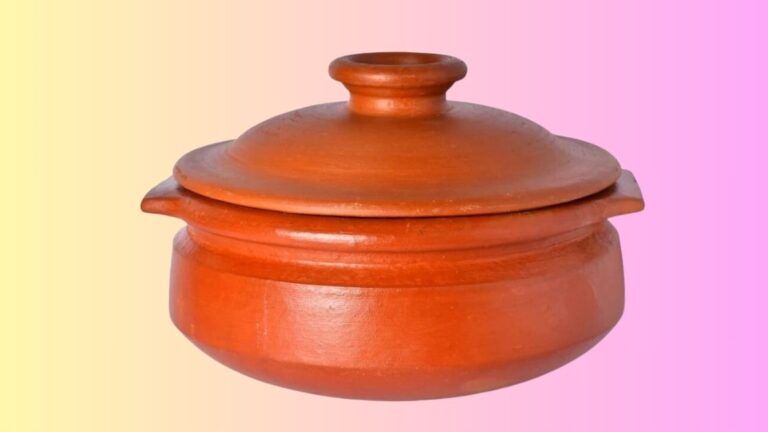Earthen Handi
An “earthen handi,” often simply referred to as a “handi,” is a traditional Indian cooking vessel made from clay or earthenware. It is known for its unique shape and properties that make it suitable for slow-cooking and simmering a wide range of Indian dishes. Here are some key characteristics and information about earthen handis:
- Material: Earthen handis are made from porous clay or earthenware. The clay used in their construction is often unglazed, which allows the pot to breathe and absorb moisture during cooking.
- Shape and Design: Handis have a distinctive shape with a wide, round base and a narrow mouth. The shape promotes even cooking and allows for slow simmering, making them suitable for preparing curries, stews, and other dishes. They often come with two handles on either side for easy handling.
- Cooking Properties: The porous nature of earthen handis allows them to absorb moisture and maintain a consistent, low heat level. This makes them ideal for slow-cooking and simmering dishes, which is a common cooking technique in Indian cuisine.
- Flavor Enhancement: Many people believe that cooking in an earthen handi enhances the flavor of the food. The clay imparts a unique earthiness to the dishes, especially when spices and aromatic ingredients are used.
- Traditional Use: Handis have been used for generations in Indian households and are an integral part of traditional Indian cooking. They are favored for making biryanis, curries, dals, and many other flavorful dishes.
- Seasoning: Like other earthenware cookware, earthen handis may require seasoning or curing before use. This involves soaking the pot in water for a few hours and allowing it to dry completely. Seasoning helps prevent the pot from cracking during cooking and makes it more resistant to absorbing flavors from different foods.
- Care and Maintenance: Proper care is important to ensure the longevity of an earthen handi. After use, they should be cleaned with minimal soap and water and should not be left in a wet or damp condition for an extended period to avoid damage. Over time, they may develop a patina from repeated use, which can enhance their cooking properties.
It’s important to note that while earthen handis have their unique qualities and are beloved for their connection to traditional and authentic cooking methods, they are more fragile than modern cookware materials like stainless steel or cast iron. Careful handling and maintenance are necessary to prevent cracking or breaking.
Earthen handis are prized for their ability to create flavorful and aromatic dishes and are often considered an essential element in traditional Indian cooking. They are a testament to the enduring appeal of handcrafted and natural items in the culinary world.
ContReent Specific Keywords: #interiordesign#stoneware#porcelain#keramik#contemporaryceramics#handmadeceramics#tableware#ceramique#artist#ceramicartist#handmadepottery#craft#ceramicstudio#Earthenware#MudFridge#MitticoolFridge#EarthenJars#EarthenPlates#EarthenCups#EarthenTawa#EarthenHandi#EarthenFlowerpots#EarthenPots#EarthenFridge#EarthenKadai.


